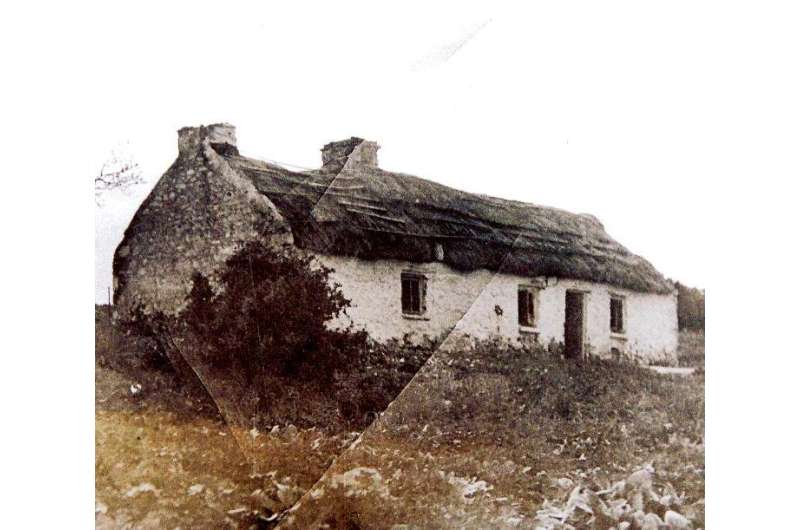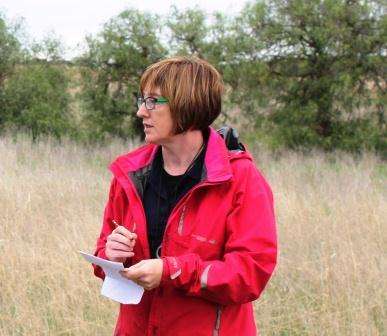An Irish-style cottage on Baker’s Flat in the nineteenth century. Credit: P Swann, photographer unknown.
The lure of a hidden Irish settlement near Kapunda has been drawing Susan Arthure back to Baker's Flat for a long time – and this week, she plans on finally finding it.
It's quite a distance, in years and kilometres, from her old desk at South Australia's Department of Environment, Water and Natural Resources on Adelaide's Grenfell Street, to the dig Ms Arthure is overseeing at Baker's Flat near Kapunda this week.
But that's nothing compared to the length of time that the story of the Irish settlers at Baker's Flat has remained hidden from the world, buried under green grass and ochre coloured soil, so far away from their homes back on the Emerald Isle.
It's a fascinating experience to hear the Flinders University archaeologist, who since downing her keyboard and picking up her trowel has received widespread recognition for her work, describe the lives of a community for the most part lost to the mists of time.
Previous archaeological work at Baker's Flat has uncovered a treasure trove of broken china, religious medals, belt buckles, dog licence tags and buttons from which she is able to weave a compelling narrative of a vibrant community playing a significant role in South Australia.
Susan Arthure in the field at Baker’s Flat
And not just any community, but a traditional Irish 'clachan' that thrived in South Australia as the clachans in Ireland died out following the Great Famine and the subsequent brutal land clearances.
A recent geophysical survey of Baker's Flat, painstakingly undertaken by Ms Arthure and her fellow Flinders archaeologists, who manually dragged their heavy equipment up and down the flat hundreds of times, has given her real hope that she will find her elusive clachan.
Straight lines of buried rock suggest enclosures in the style of a Clachan, where once Irish people protected their crops behind walls as their livestock roamed free; while compact squares look very much like they could be the floors of homes that were rich in copper slag from the local mines.
Combined with the surveys, archival evidence and artefacts found already, a full picture of the settlement is finally emerging.
Perhaps it's in her blood, because she hails from Ireland herself, but the calls of the Irish community lost to history at Baker's flat have been long and strong for Susan Arthure.
"Come look for us," they have called. "Tell the world about us. Remember us."
This week, if her heart is right, and her findings true, Susan Arthure and her team will finally uncover their lost home.
Provided by Flinders University
























